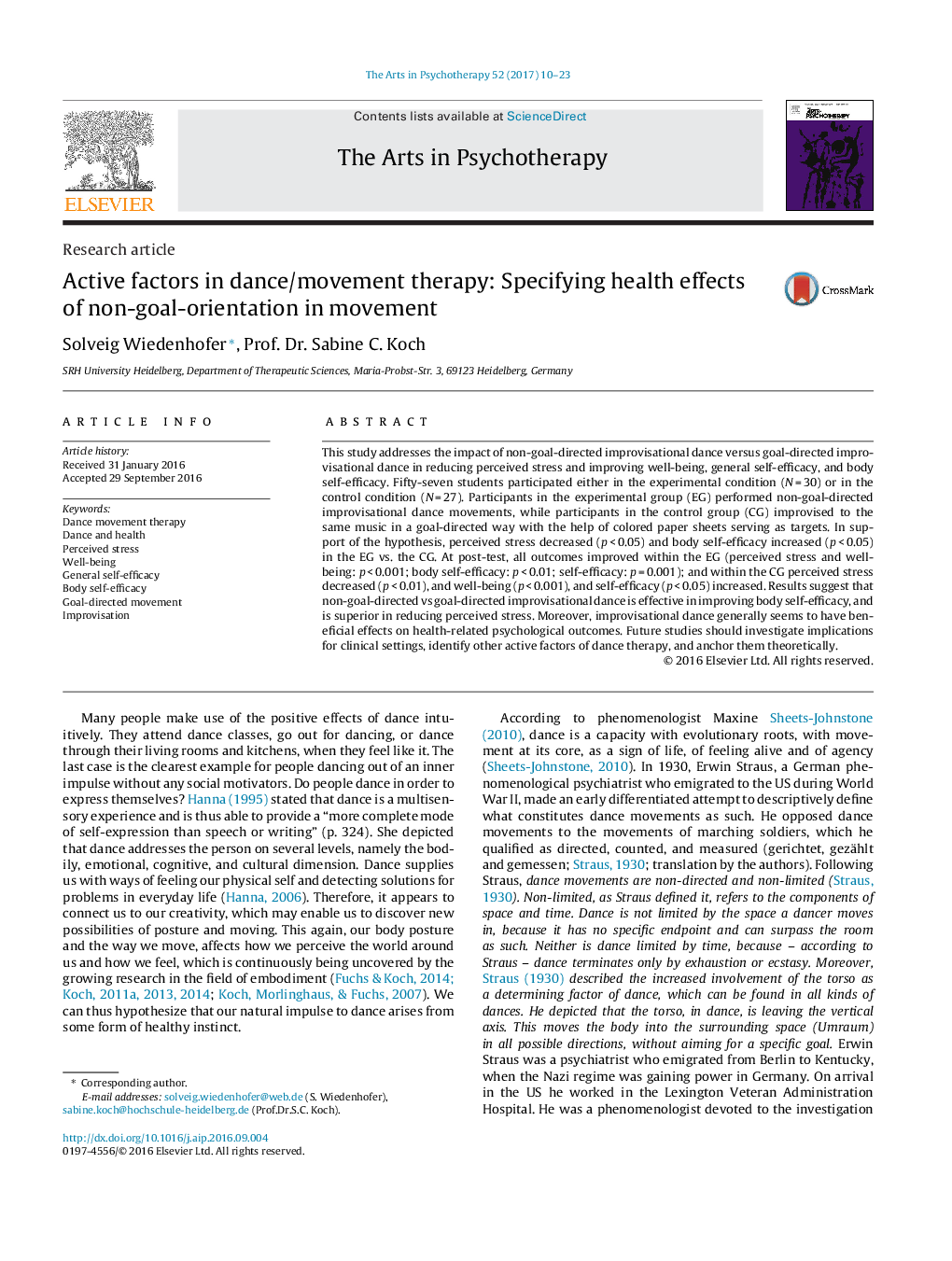| کد مقاله | کد نشریه | سال انتشار | مقاله انگلیسی | نسخه تمام متن |
|---|---|---|---|---|
| 4935740 | 1434300 | 2017 | 14 صفحه PDF | دانلود رایگان |
عنوان انگلیسی مقاله ISI
Active factors in dance/movement therapy: Specifying health effects of non-goal-orientation in movement
ترجمه فارسی عنوان
عوامل فعال در رقص / حرکات جراحی: تعیین تأثیرات بهداشتی غیر هدف گرا در جنبش
دانلود مقاله + سفارش ترجمه
دانلود مقاله ISI انگلیسی
رایگان برای ایرانیان
کلمات کلیدی
حرکات ورزشی رقص، رقص و سلامتی استرس درک شده، تندرستی، خودکارآمدی عمومی، خودکارآمدی بدن، حرکت هدفمند، ابتکار،
موضوعات مرتبط
علوم پزشکی و سلامت
پزشکی و دندانپزشکی
روانپزشکی و بهداشت روانی
چکیده انگلیسی
This study addresses the impact of non-goal-directed improvisational dance versus goal-directed improvisational dance in reducing perceived stress and improving well-being, general self-efficacy, and body self-efficacy. Fifty-seven students participated either in the experimental condition (N = 30) or in the control condition (N = 27). Participants in the experimental group (EG) performed non-goal-directed improvisational dance movements, while participants in the control group (CG) improvised to the same music in a goal-directed way with the help of colored paper sheets serving as targets. In support of the hypothesis, perceived stress decreased (p < 0.05) and body self-efficacy increased (p < 0.05) in the EG vs. the CG. At post-test, all outcomes improved within the EG (perceived stress and well-being: p < 0.001; body self-efficacy: p < 0.01; self-efficacy: p = 0.001); and within the CG perceived stress decreased (p < 0.01), and well-being (p < 0.001), and self-efficacy (p < 0.05) increased. Results suggest that non-goal-directed vs goal-directed improvisational dance is effective in improving body self-efficacy, and is superior in reducing perceived stress. Moreover, improvisational dance generally seems to have beneficial effects on health-related psychological outcomes. Future studies should investigate implications for clinical settings, identify other active factors of dance therapy, and anchor them theoretically.
ناشر
Database: Elsevier - ScienceDirect (ساینس دایرکت)
Journal: The Arts in Psychotherapy - Volume 52, February 2017, Pages 10-23
Journal: The Arts in Psychotherapy - Volume 52, February 2017, Pages 10-23
نویسندگان
Solveig Wiedenhofer, Prof. Dr. Sabine C. Koch,
